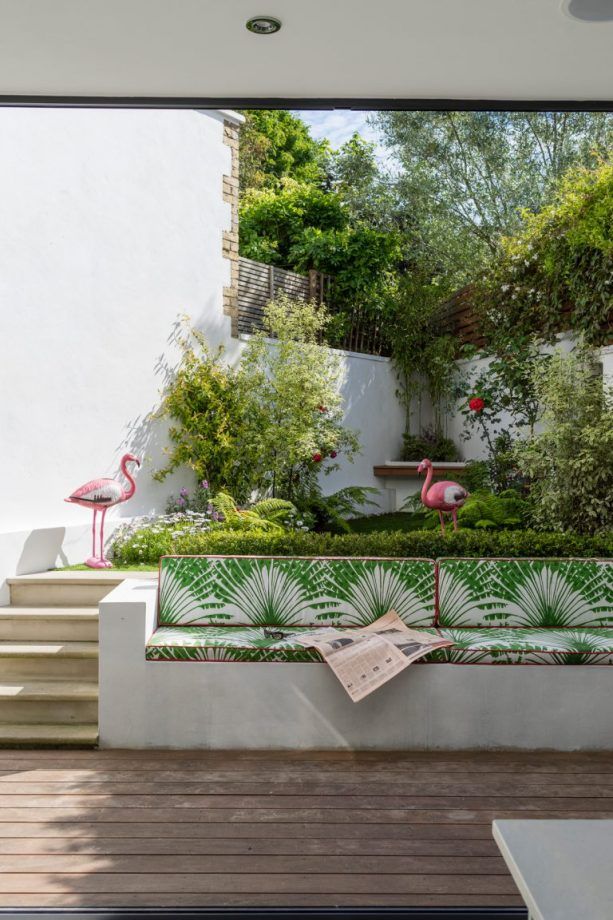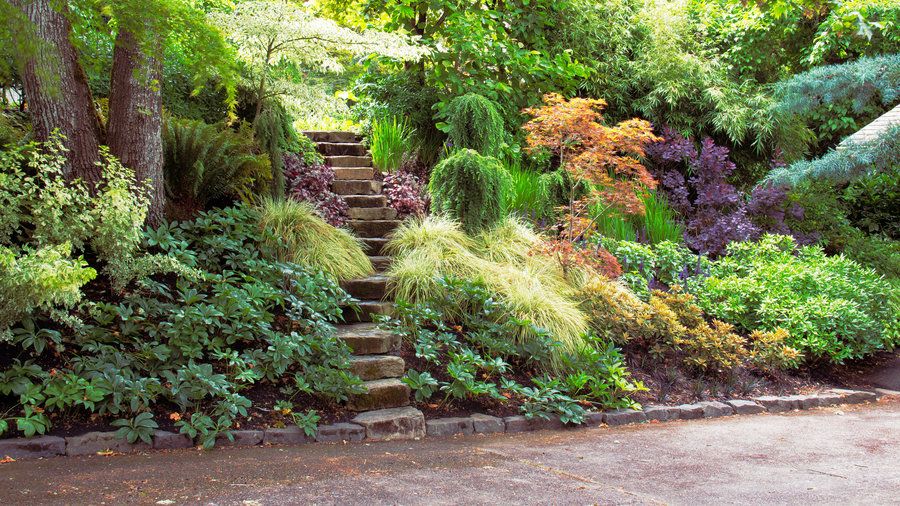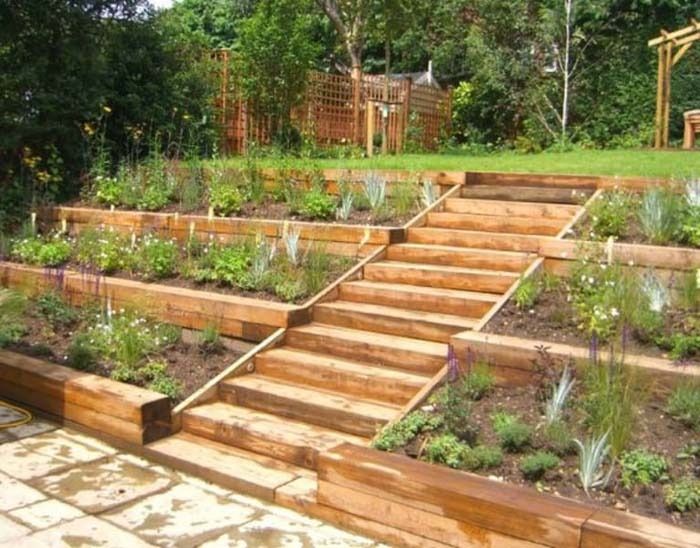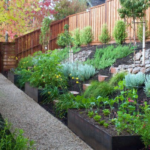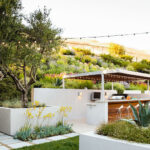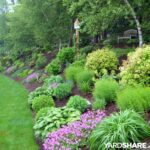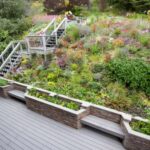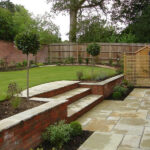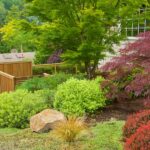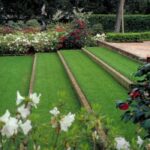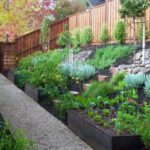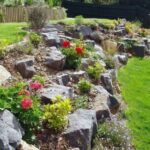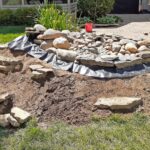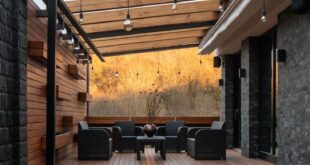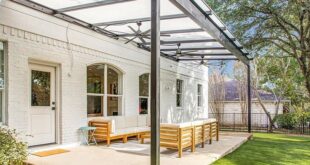Gardening on a sloped surface can present some challenges, but with the right planning and creativity, it can also offer some unique opportunities for creating a beautiful and functional garden space. Here are some ideas to help you make the most of your sloped garden.
One option for gardening on a slope is to terrace the area, creating a series of flat areas at staggered levels. This can help to prevent soil erosion and make it easier to access and maintain your garden. Terracing can be done using retaining walls, steps, or built-up beds, and can add visual interest to your garden by creating different levels for planting and seating areas.
Another idea for gardening on a slope is to use plants that are well-suited to the specific conditions of the site. Plants with deep root systems can help to stabilize the soil on a slope and prevent erosion. Groundcovers like creeping thyme or ivy can also be helpful for covering bare soil and reducing runoff. Choose plants that can tolerate the amount of sunlight and moisture available on the slope, as these conditions may vary at different points on the slope.
Consider planting trees and shrubs strategically on a sloped garden to help anchor the soil and create structure. Trees with spreading root systems can help to stabilize the slope, while taller shrubs can provide privacy and screening. Planting in groups or drifts can help to create a cohesive look and prevent soil erosion, as the roots of neighboring plants will help to stabilize each other.
To add visual interest and create a sense of unity in your sloped garden, consider using hardscaping elements like pathways, steps, and retaining walls. These features can help to define different areas of the garden and provide structure. Using materials like stone, brick, or wood can also complement the natural surroundings and create a harmonious look.
Water management is an important consideration when gardening on a slope, as water runoff can be a major issue. To prevent erosion and keep your garden healthy, consider incorporating features like swales, rain gardens, or French drains to help manage water flow. Planting native plants that are adapted to your local climate can also help to reduce water usage and create a more sustainable garden.
Lastly, consider the overall design and aesthetic of your sloped garden. Think about how you want to use the space and what kind of atmosphere you want to create. Whether you prefer a formal garden with geometric shapes and structured plantings, or a more naturalistic garden with meandering paths and wildflowers, there are endless possibilities for creating a beautiful and functional garden on a slope.
 yishifashion Where Outdoor Dreams Become Reality
yishifashion Where Outdoor Dreams Become Reality
